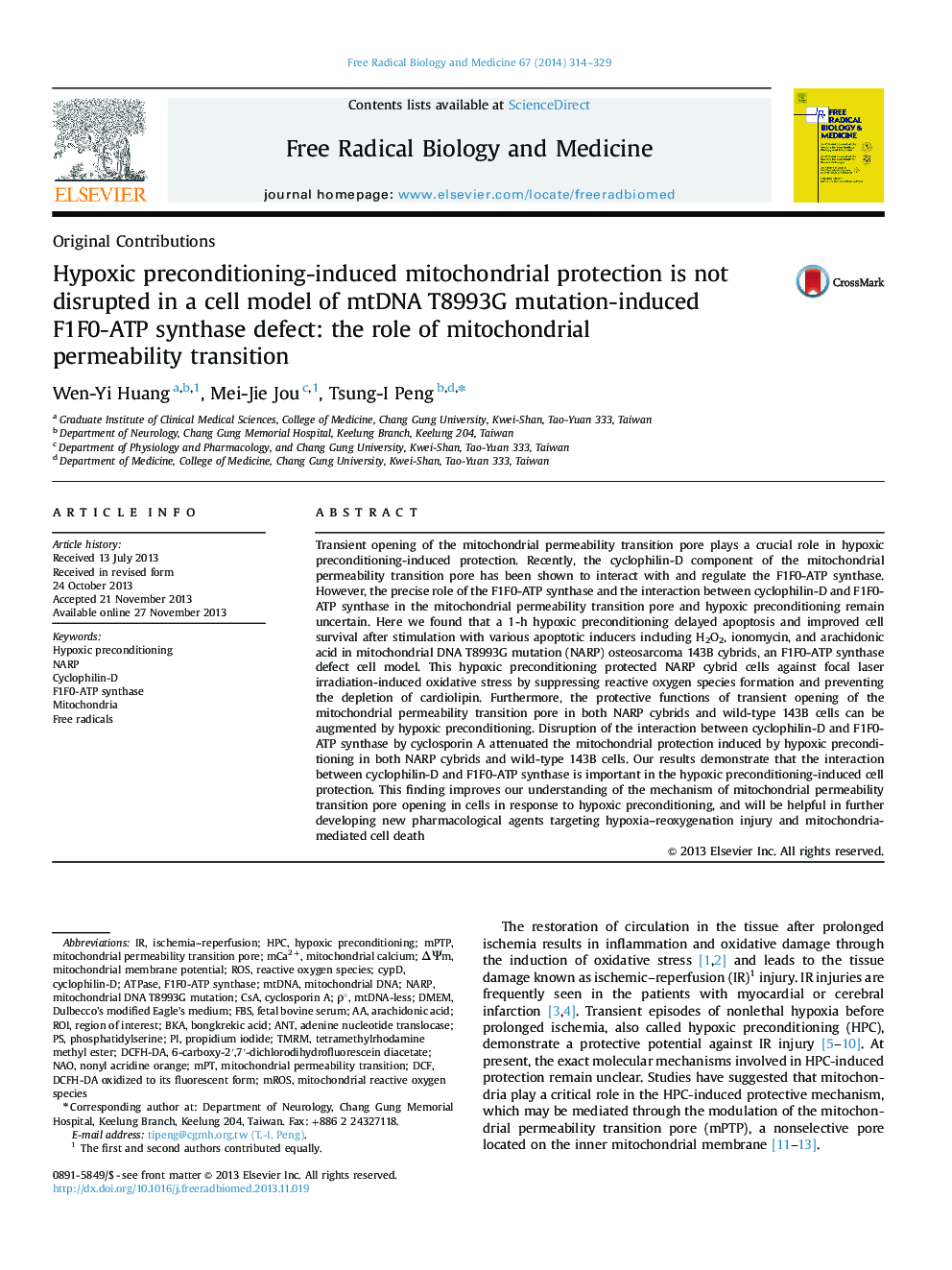| Article ID | Journal | Published Year | Pages | File Type |
|---|---|---|---|---|
| 8271105 | Free Radical Biology and Medicine | 2014 | 16 Pages |
Abstract
Transient opening of the mitochondrial permeability transition pore plays a crucial role in hypoxic preconditioning-induced protection. Recently, the cyclophilin-D component of the mitochondrial permeability transition pore has been shown to interact with and regulate the F1F0-ATP synthase. However, the precise role of the F1F0-ATP synthase and the interaction between cyclophilin-D and F1F0-ATP synthase in the mitochondrial permeability transition pore and hypoxic preconditioning remain uncertain. Here we found that a 1-h hypoxic preconditioning delayed apoptosis and improved cell survival after stimulation with various apoptotic inducers including H2O2, ionomycin, and arachidonic acid in mitochondrial DNA T8993G mutation (NARP) osteosarcoma 143B cybrids, an F1F0-ATP synthase defect cell model. This hypoxic preconditioning protected NARP cybrid cells against focal laser irradiation-induced oxidative stress by suppressing reactive oxygen species formation and preventing the depletion of cardiolipin. Furthermore, the protective functions of transient opening of the mitochondrial permeability transition pore in both NARP cybrids and wild-type 143B cells can be augmented by hypoxic preconditioning. Disruption of the interaction between cyclophilin-D and F1F0-ATP synthase by cyclosporin A attenuated the mitochondrial protection induced by hypoxic preconditioning in both NARP cybrids and wild-type 143B cells. Our results demonstrate that the interaction between cyclophilin-D and F1F0-ATP synthase is important in the hypoxic preconditioning-induced cell protection. This finding improves our understanding of the mechanism of mitochondrial permeability transition pore opening in cells in response to hypoxic preconditioning, and will be helpful in further developing new pharmacological agents targeting hypoxia-reoxygenation injury and mitochondria-mediated cell death
Keywords
DMEMCyclophilin-DNARP6-carboxy-2′,7′-dichlorodihydrofluorescein diacetateCypDMrOSTMRMBKAΔΨmMPTPMPTDCFH-DAANTHPCDcfFBSROIMitochondrial DNAF1F0-ATP synthaseHypoxic preconditioningROSArachidonic acidBongkrekic acidmitochondrial permeability transitionmitochondrial permeability transition poreCSAischemia–reperfusionATPaseadenine nucleotide translocasemtDNAFree radicalsfetal bovine serumcyclosporin APhosphatidylserinetetramethylrhodamine methyl esterDulbecco’s modified eagle’s mediumregion of interestMitochondriaNonyl acridine orangeNAOMitochondrial membrane potentialPropidium iodideMitochondrial calciummitochondrial reactive oxygen speciesReactive oxygen species
Related Topics
Life Sciences
Biochemistry, Genetics and Molecular Biology
Ageing
Authors
Wen-Yi Huang, Mei-Jie Jou, Tsung-I Peng,
